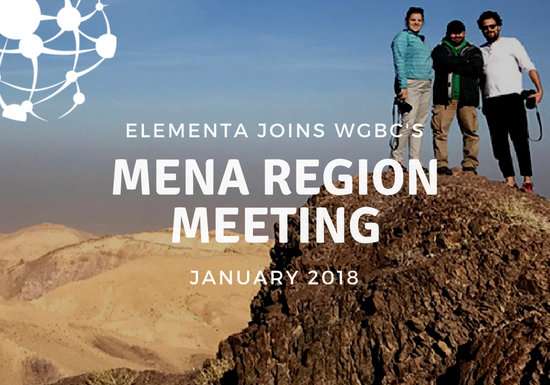Elementa’s Ed Garrod joins World Green Building Council’s MENA region meeting

As sponsors of the World Green Building Council‘s Advancing Net Zero programme, Elementa Principal, Ed Garrod recently visited Jordan for the organisation’s meeting of Green Building Councils in the MENA region. See below to read WGBC Project Manager, Victoria Burrows’s account of the trip.
An unexpected journey: The rise of net zero carbon buildings in the MENA region
“Earlier this month I was lucky enough to visit to Jordan. As we traversed from the Dead Sea, known as the lowest point on Earth, up into the mountains, I was inspired by the emergence of many low carbon building projects. Driven by commercial benefits and optimal climatic conditions, solar and wind farms can be seen across the desert, and roof mounted photovoltaic panels are visible across the skyline of Amman, the capital city. I was delighted to see how the country is already realising the potential for low carbon operations.
I was in Jordan for WorldGBC’s meeting of Green Building Councils in the MENA region. However, this was no ordinary meeting; for the first time ever, it was combined with a full day regional roundtable for Advancing Net Zero, WorldGBC’s global project which aims to ensure all buildings are net zero carbon by 2050.
There was a huge turnout as GBCs from Bahrain, Emirates, Egypt, Jordan, Kuwait, Lebanon, Morocco, Palestine and Qatar gathered to hear from our staff at WorldGBC and partner organisations Integral Group and Majid Al Futtaim about the work of the project, the challenges and benefits of net zero carbon buildings, international case studies, and leadership examples from the region.
A total of 30 delegates participated in this very informative workshop, exploring collaboration opportunities to promote the necessity of zero emissions buildings, to communicate their achievability and innovative solutions, and to engage industry to take transformative action in a coordinated regional response to the Paris Agreement commitments.
It is encouraging that both the public and private sectors are leading the transition towards low carbon renewable energy sources.
For example, a collaboration between the Ministry of Energy and Mineral Resources and the Ministry of Awqaf and Islamic Affairs, has initiated the implementation of solar PV systems on all 6,000 mosques in Jordan – in some cases covering more than 100 per cent of the building’s energy needs and drastically reducing operating costs that often rely on public donations. Any surplus energy is exported back to the grid thanks to net-metering regulations introduced in 2012. This demonstrates the enormous potential of solar energy in Jordan, and the opportunities to incorporate it into everyday life.
Another project, located in the Dana Biosphere Reserve, 225km south of Amman, is Feynan Eco Lodge. The 26 room hotel is entirely powered by a combination of solar panels and battery storage, and affords glorious star-gazing opportunities due to the absence of light pollution from the building and its surroundings. Projects like this, whilst not directly replicable in most situations, serve as examples of re-evaluating the way buildings are designed and operated. The building layout is designed to require only daylight during the day, with artificial lighting provided only in kitchens, offices and bathrooms; and the only heat source required is via two open fireplaces that use a natural bi-product from local olive pressing.
I was truly inspired by these examples and the leadership that is being shown in Jordan. But it is not alone. Other countries in the MENA region are stepping up on the net zero challenge. I look forward to exploring ways to accelerate the uptake of net zero carbon buildings across the region, and remain ever optimistic about meeting our 2050 goal”.
